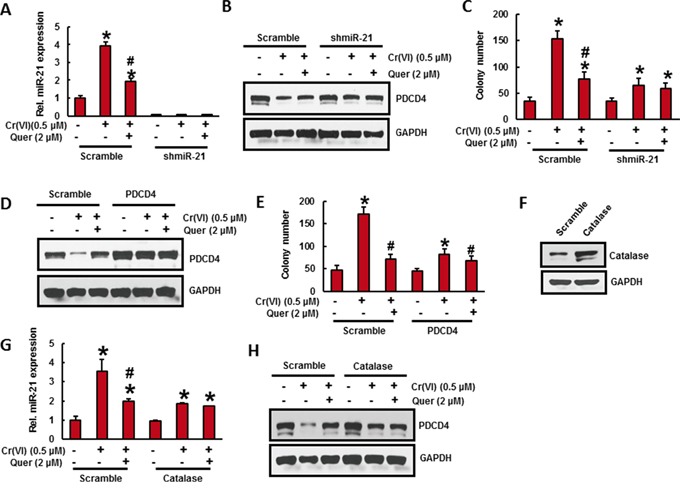Figure 5. Stable knockdown of miR-21 and overexpression of PDCD4 or catalase in BEAS-2B cells significantly reduces the Cr(VI)-induced cell transformation.

Stable knockdown of miR-21 in BEAS-2B cells suppresses the Cr(VI)-induced cell transformation. A-C. BEAS-2B cells were stably knockdown with miR-21 shRNA or their corresponding vehicle vector and treated with Cr(VI) (0 or 0.5 μM) with or without quercetin (2 μM) for 6 months. (A) The relative miR-21 level was determined by Taqman real-time PCR. (B) Cell lysates were prepared to determine the protein level of PDCD4 using Western blot analysis. (C) Malignant cell transformation was determined by soft agar assay. Stable overexpression of PDCD4 in BEAS-2B cells reduces the Cr(VI)-induced cell transformation. D-E. BEAS-2B cells were stably overexpressed with PDCD4 or their corresponding vehicle vector and treated with Cr(VI)(0 or 0.5 μM) with or without quercetin (2 μM) for 6 months. (D) Cell lysates were prepared to determine the protein level of PDCD4 using Western blot analysis. (E) Anchorage independent growth was determined by soft agar assay. Stable overexpression of catalase in BEAS-2B cells decreases the Cr(VI)-induced cell transformation. F-H. BEAS-2B cells were stably overexpressed with catalase or their corresponding vehicle vector treated with Cr(VI) (0 or 0.5 μM) with or without quercetin (2 μM) for 6 months. (F) BEAS-2B cells overexpressed with catalase was determined by Wester blotting. (G) The relative miR-21 level was determined by Taqman real-time PCR. (H) PDCD4 protein level was detected by immunoblotting. Data presented in the bar graphs are the mean ± SD of three independent experiments. *# indicates a statistically significant difference from respective control cells with p<0.05.
